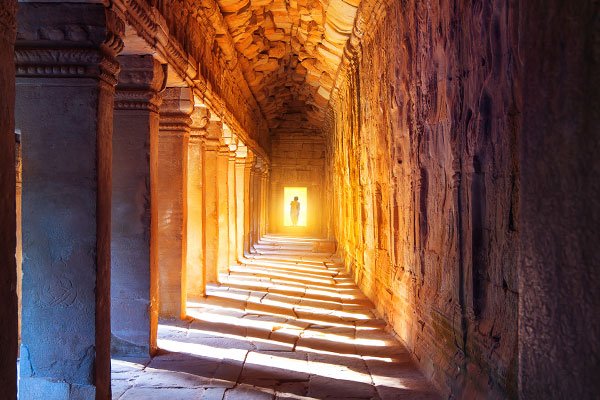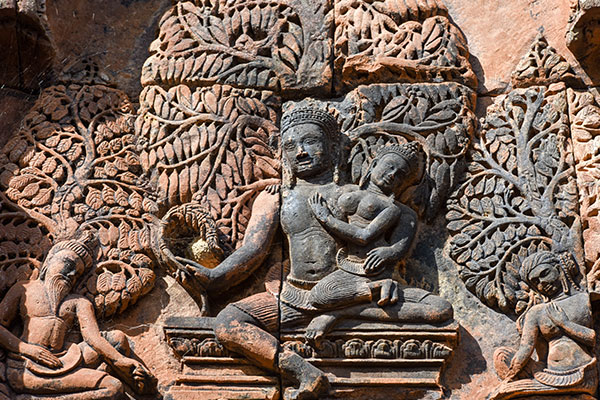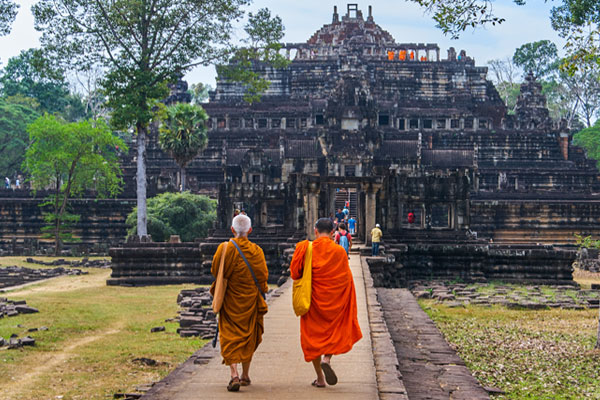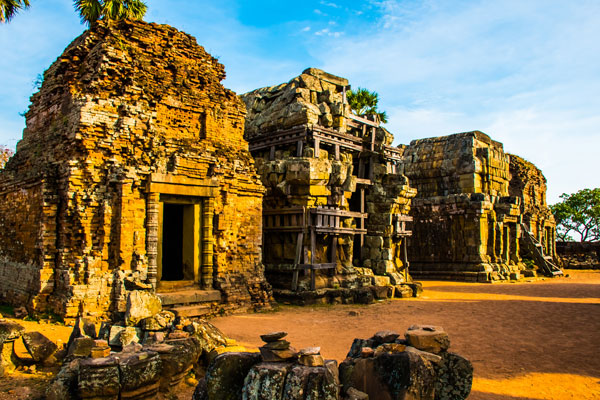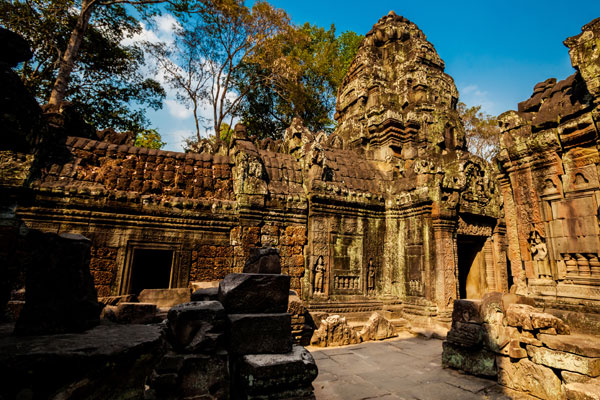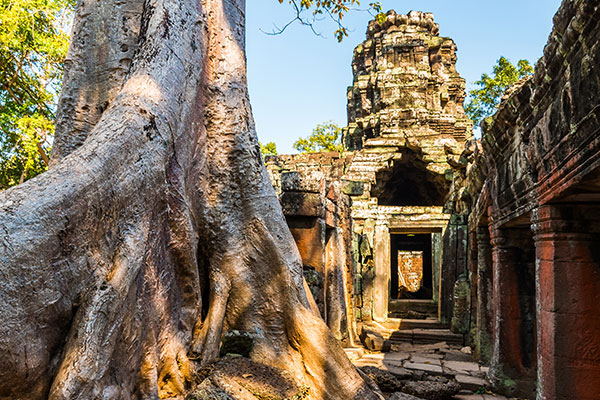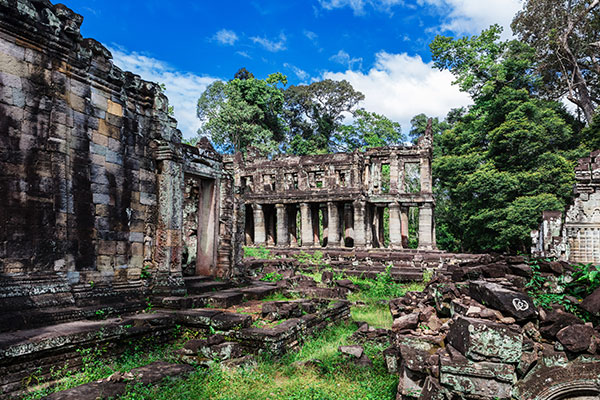10 Best Temples of Angkor Wat
10 temples to check out on a first-time trip
Angkor Wat, as CNN stated, " can be a bewildering ordeal". With a history so long, a complex so massive, styles so various, and your time so precious, pick the best ones that you wouldn't want to miss for this first-time trip to Siem Reap.
[wpseo_breadcrumb]
Why You Won't Want to Miss Them ...
- Our list covers the four most important sites that say the most of Angkorian cultures, including Angkor Wat, Angkor Thom, Bayon, and Ta Prohm.
- Considering most travelers spare 2 to 3 days in Siem Reap, these 10 temples just fill up the itinerary perfectly with ease of travel.
- Constructive, experience and cultural features come in a great variety; suitable for a diverse itinerary.
- Besides the most-visited ones, we have some smaller, less-trodden yet still amazing temples that would make a great difference for your trip.
10 Best Temples of Angkor Wat
First thing that you might need to know about Angkor Wat is that IT IS REALLY BIG and clearly 2 days is just not enough to cover all the temples. The entire site can be sectioned into basicially 3 main areas, the biggest one of which is the cluster of Angkor Wat, Angkor Thom, Bayon, and Ta Prohm. For most travelers, the first day in Siem Reap will be spent on these four major sites and there are some secret corners at each section that are not on everybody's list. Scroll down to find out the 10 best temples of the entire Angkor Wat Archipelago Zone. Our exclusive tips will help you plan, too.
Angkor Wat
Angkor Wat is an incredibly massive combination of mountain, moats, towers, libraries, and galleries. Originally constructed for the Hindu god Shinu, it has been gradually turned into a Buddhist worship center by the end of the 12th century. iAs a sparkling gem of Khmer temples, If you'd take one temple in depth, this would be it.
Quick Guide:
- History: 12th century
- Feature: Khmer style
- Best Time: All day; early morning is great for a sunrise view at the frontal lotus pond.
- Gatsby's Tip: Big crowds flood in at 0900am; better to take a guided tour by a Khmer scholar, which will take 2 hours by walking.
- Crowdedness: 5 / 5
- Direction: 6km north of Siem Reap.
Ta Prohm Temple
Picture yourself as a tomb raider on a mission. Dusky, shady, humid, birds twittering, gigantic trees crawling out from the walls, and scattered stones all over -- the surreal atmosphere makes Ta Prohm one of the most visited sites among visitors. The fun here is rather finding your way out from the maze of the dense jungle.
Quick Guide:
- History: Late 12th century
- Feature: Bayon style
- Best Time: Afternoon to avoid the strong sunlight
- Gatsby's Tip: Humid and hot during the rainy season, mosquito repellent can be handy.
- Crowdedness: 5 / 5
- Direction: 1km east of Siem Reap.
Banteay Srei
Largely constructed out of red sandstone, Banteay Srei is the masterpiece of Khmer-style temple edifices. As the only temple in Angkor Wat that wasn't built by a monarch, Yajnavaraha, a counselor to king Rajendravarman II, built this beautiful temple for Shiva. Smaller in scale, but more interesting details.
Quick Guide:
- History: Mid-10th century
- Feature: Khmer style
- Best Time: Best lighting is the early morning but late afternoon is delightful, too; visiting time within 1 hour.
- Gatsby's Tip: It can be crowded during the early morning (before 0700am).
- Crowdedness: 5 / 5
- Direction: 25km northeast of Siem Reap
Baphuon Temple
Known as the mountain temple, Baphuon Temple's most distinctive feature is its intricate carvings covering every surface. Originally built as a Hindu temple dedicated to Shiva, it was converted to a Buddhist temple by the end of the late 15th century and becomes the most worshiped site in Angkor Wat. Its pyramid structure is meant to represent Mount Meru, the most sacred mountain in Hinduism.
Quick Guide:
- History: Mid-11th century
- Feature: Baphuon style
- Best Time: All day; visiting time requires 1 hour.
- Gatsby's Tip: It gets crowded during the late morning.
- Crowdedness: 4 / 5
- Direction: Right next to Bayon Temple
Phnom Krom Temple
Set on the mountain of 140 meters, this temple was built for the Hindu gods Shiva, Vishnu, and Brahma. Local legend has it that the monkey general Hanuman exposed all the rocks in a hunt for medicine in the Ramayana epic, thus a rocky steep climb up to the top.
Quick Guide:
- History: Late 9th to 10th century AD.
- Feature: Sunset view of the Tonle Sap Late at the temple's west gate.
- Best Time: Late afternoon; visiting time requires one hour tops.
- Gatsby's Tip: The climb might be dangerous during a rainy day.
- Crowdedness: 3 / 5
- Direction: 12km southwest of Siem Reap, 10 minutes by driving, 20 minutes by Tuk tuk.
Bayon Temple
As the most photogenic spot of Angkor Wat, Bayon Temple is widely known for the mysterious smiling faces carved in giant stones set on the upper terrace and cluster around its central peak. Facades around the entire site present an interesting which present a combination of mythological, historical, and mundane scenes.
Quick Guide:
- History: Late 12th century
- Feature: Bayon style
- Best Time: All day, better in early morning to avoid big tourist groups and heat; visiting time within 2 hours
- Gatsby's Tip: Requires some climbing, no shades over so it can be hot during mid-day.
- Crowdedness: 5 / 5
- Direction: Inside Angkor Thom.
Ta Som Temple
While Ta Prahom can be oftentimes flocked, some discerning travelers and photographers alike resort to Ta Som for its tranquilness. This temple consists of one shrine surrounded by enclosure laterite walls and was dedicated to r Dharanindravarman II the father of King Jayavarman VII. Left largely unrestored, little work had been done here until the 1950s, ensuring a more otherworldly atmosphere.
Quick Guide:
- History: End of the 12th century
- Feature: Bayon style
- Best Time: All day, better in late afternoon.
- Gatsby's Tip: Walking amoung scattering and slippery rocks.
- Crowdedness: 3 / 5
- Direction: Northeast of Angkor Thom.
Banteay Kdei
Among all the constructions within the first loop of the Angkor Wat Complex, Banteay Kdei might have the least information for its original constructional plan and purpose. It might have been a monastery judging by the name "Citadel of Monks' Cells". Its evolved style of Bayon and Angkor makes it stand out.
Quick Guide:
- History: 12th to 13th centuries
- Feature: Combination of Bayon and Angkor styles
- Best Time: All day but better in the morning; 2 hours tops for visiting.
- Gatsby's Tip: Don't miss the big reservoir Srah Srang on your way.
- Crowdedness: 4 / 5
- Direction: Southeast of Ta Prohm
Preah Khan Temple
Literally meaning "Holy Sword", Preah Khan Temple was an extensive monastery, temple, galleries, library, and hall complex built on the site of Jayavarman VII's victory over the invading Chams in 1191. Some of the sculptures are removed for safe-keeping and the remaining ones blend perfectly with the massive tree roots and nearby waters.
Quick Guide:
- History: Late 12th century
- Feature: Khmer style
- Best Time: All day; visiting time requires at least 2 hours.
- Gatsby's Tip: The associated Jayatataka baray offers great views during the rainy season
- Crowdedness: 4 / 5
- Direction: Northeast of Angkor Thom
Phimeanakas
Built inside the walls of Angkor Thom, this late-10th-century focal point of Suryavarman I's capital. Not many visitors around but the reflection of this three-tiered pyramid-shaped temple over the small pond creates a pretty mysterious atmosphere, especially during the evening.
Quick Guide:
- History: End of the 10th century
- Feature: Unique Kleang style and sunset reflection over the pond.
- Best Time: Late afternoon; visiting time requires one hour tops.
- Gatsby's Tip: Not allowed to climb.
- Crowdedness: 3 / 5
- Direction: Inside Angkor Thom's Royal Palace, north of Baphnuon.
Start Planning Your Trip to Cambodia
Contact an expert in Cambodia that will support you 1-1 from the initial chat, itinerary design, and even on the trip.

